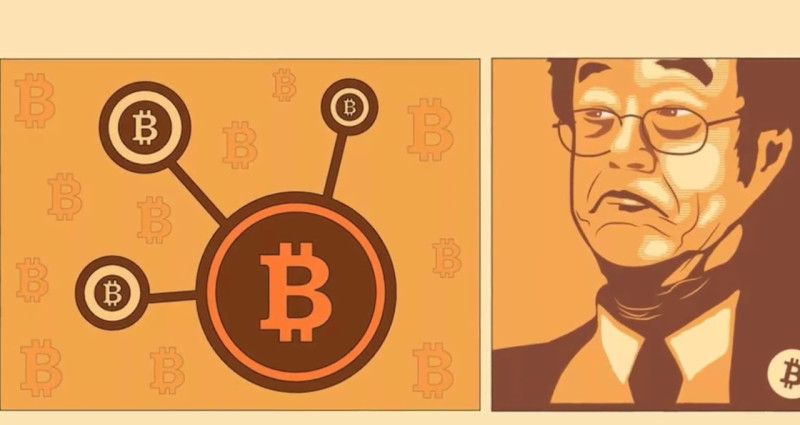
Every great invention begins with a simple idea. Someone once created the first car, and now we can hardly imagine daily life without it. Someone else invented the telephone, and it completely changed the way we communicate. The invention of television brought images and news into every home and apartment.
These things, so essential to our lives, have their own stories that are easy to find online, which itself was once just an invention too.
Today, we are witnessing the rapid evolution of New cryptocurrencies. Even if you ignore it or try to pretend it does not affect your daily life, its growth continues. The cryptocurrency industry began a little less than two decades ago, although the first true cryptocurrency appeared 15 years ago. Today, the word "cryptocurrency" is one of the hottest global trends.
This digital universe was born almost overnight through what many call its own “Big Bang” — the launch of Bitcoin. Who created it, how the digital asset industry has evolved since its early days, and what lies ahead — these are the questions we will explore in this article.
Brief history

The first ideas about cryptocurrency began forming back in 1983, thanks to two visionaries, David Chaum and Stefan Brands. They were among the first to describe the concept of electronic money. More than just a theory, they proposed a detailed early framework.
At the time, their ideas seemed like science fiction. Moreover, there simply were not enough resources to develop this new system. As a result, the concept did not progress beyond the theoretical stage.
The next important milestone came in 1997, when Adam Back developed a system called Hashcash. Originally designed to combat spam and prevent DoS attacks, Hashcash soon proved useful in other areas. It gradually became the basis for forming blocks within what would become blockchain systems — marking the dawn of true digital money.
Hal Finney also made a significant contribution by building the hash-block chains that underpinned the Hashcash system.
Another notable step in the evolution of cryptocurrencies was the emergence of DigiCash, a company that, starting in 1990, used cryptography to ensure the anonymity of payments. However, DigiCash was strictly centralized, a feature that differentiates it from most modern cryptocurrencies. In 1998, the company went bankrupt.
Today’s digital currencies are inseparable from the market environment. They are designed to adapt to their demands. As technology advances, the creation of a decentralized digital currency seems like a natural development. Online communities are forming where people exchange goods and services, and increasingly prefer to use electronic money for convenience. Transactions are conducted through blockchain systems, which remain open and transparent, yet still preserve user anonymity.
eCash —very first cryptocurrency
Back in 1983, American cryptographer David Chaum introduced an innovative concept of electronic money, the first cryptocurrency in its earliest form. His idea envisioned tokens that could be transferred between individuals while ensuring both security and complete anonymity. Remarkably, his vision closely resembles the structure of modern cryptocurrencies.
Chaum developed a unique technology he called the "blinding formula", a method designed to securely encrypt data during transmission. This system would allow people to exchange cash safely, while maintaining its authenticity and preventing any form of transaction tracking.
A few years after presenting his ideas, Chaum founded a company called DigiCash, aiming to bring his vision to life. Through it, he launched the first cryptographic electronic money known as eCash.
Unfortunately, DigiCash ceased to exist in 1998 due to an unexpected bankruptcy. Nevertheless, its concepts and encryption tools played a significant role in shaping the evolution of future digital currencies.
E-Gold
Two years before DigiCash’s bankruptcy, in 1996, Douglas Jackson and Barry Downey developed a digital currency backed by gold.
This new type of electronic money enabled users on the platform to exchange ownership rights to gold. Despite its initially noble intentions, the platform unexpectedly gained popularity among individuals involved in illegal activities. It became a tool for money laundering and was frequently used by those wishing to remain anonymous.
Bit Gold
Nick Szabo, often regarded as one of the founding figures of the cryptocurrency revolution, proposed a concept that would later serve as a precursor to Bitcoin.
His idea, which became known as Bit Gold, incorporated various principles that would eventually form the foundation of blockchain technology, including peer-to-peer networks, mining, public ledgers, and cryptographic security methods.
One of the most groundbreaking elements of Bit Gold was its rejection of centralized systems. Szabo aimed to create a structure free from the control of central banks or authorities. He envisioned Bit Gold as a digital equivalent of physical gold, enabling people to transact without intermediaries.
Although Bit Gold was never fully implemented, it had a significant influence on the subsequent development of digital currencies, many of which emerged more than a decade later.
B-Money
In 1998, programmer Wei Dai introduced an updated version of an existing concept called B-Moneyб a system of electronic cash that aimed to provide users with complete anonymity and ensure decentralization within the network.
Dai proposed two separate protocols, one of which relied on the use of a synchronous broadcast channel without any mixing capabilities. Although B-Money never achieved practical implementation and differed significantly from Bitcoin, it remains one of the earliest attempts to build a secure and private system for transferring digital funds.
Hashcash
In the mid-1990s, a system called Hashcash was created. It was one of the most promising digital money concepts before the emergence of Bitcoin.
Originally developed to combat email spam and prevent denial-of-service (DoS) attacks, Hashcash soon took on greater importance. It featured a proof-of-work algorithm, which helped generate and distribute new units of currency, a mechanism later adopted by modern cryptocurrencies.
Despite its early promise, Hashcash eventually faced serious limitations. By 1997, the computational power required for the system increased dramatically, surpassing what existing technology could handle. As a result, the system began to lose efficiency and ultimately ceased to function.
Nevertheless, Hashcash attracted significant interest from developers and users during its peak. Many of its core principles and ideas were later incorporated into the foundation of Bitcoin.
Birth and rise of Bitcoin

How did the first cryptocurrency emerge, and who is the mysterious Satoshi Nakamoto? To this day, no one knows for certain whether that name belongs to a real person or is simply a pseudonym for a group of crypto enthusiasts. But the journey began back in 2007, when the idea of building a decentralized blockchain network and the very first version of Bitcoin started to take shape.
The story of Bitcoin is rich with turning points. Here are the most important milestones.
2007: Satoshi Nakamoto began working on the core concept of a distributed system, one that could function without a centralized authority.
2008: Satoshi published the now-legendary Bitcoin White Paper. This document outlined the principles of a digital peer-to-peer payment system based on blockchain technology and laid the foundation for Bitcoin’s creation.
January 2009: The first Bitcoin software (versions 0.1/0.1.0/0.1.5) was released, and the Genesis Block — Block 0 — was mined, yielding 50 BTC. Not long after, Satoshi sent 10 BTC to another network participant in the first test transaction. Early versions of Bitcoin worked only on Windows 2000, NT, and XP, but developers quickly began enhancing the software.
September 2009: The first known Bitcoin-to-fiat transaction took place when Martti Malmi sold 5,050 BTC to a user known as NewLibertyStandard for $5.02 via PayPal.
November 2009: The website bitcoin.org was launched, serving as a hub for early adopters and forming the first crypto community. It later hosted the Bitcointalk.org forum, a vital platform that helped propel Bitcoin into public view.
December 2009: Bitcoin client version 0.2 was released with Linux support. This allowed parallel block generation, significantly improving mining efficiency. As a result, everyday users started to mine actively. Around this time, development began on the JSON RPC API interface.
Summer 2010: Bitcoin version 0.3 was released, making mining more complex. However, that did not slow interest. On the contrary, developers began recommending GPUs for better mining performance. A user known as ArtForz even created the first known crypto mining farm.
August 2010: A critical bug emerged — transactions were not being properly verified before inclusion in the blockchain. On August 15, attackers exploited this flaw, generating 184 billion BTC and sending them to two addresses. The issue was patched quickly, and the invalid transaction was reversed. The protocol was then upgraded to prevent such exploits in the future.
November 2010: The first mining pool, Slush’s Pool, was launched. It enabled miners to combine their computing power to increase chances of earning rewards. This made mining accessible and more profitable, especially as solo mining became less feasible.
Mining pools quickly gained widespread popularity because they offered users a relatively stable income from cryptocurrency mining. Naturally, this model led to a rapid surge in their adoption across the crypto community.
By the end of 2010, Bitcoin client version 0.3.9 was released. Around this time, Satoshi Nakamoto mysteriously stepped away from the project without explanation. To this day, the identity of Bitcoin’s creator remains unknown, despite endless speculation and theories.
Bitcoin, however, continued to evolve without its enigmatic founder. The crypto community carried the torch, pushing forward the development of new digital currencies and expanding the ecosystem — all sparked by the success of the world’s very first cryptocurrency.
Pizza for 10,000 BTC?

Back in 2010, the value of Bitcoin was so low that mining required virtually no effort. For most early miners, it was more of a hobby than a money-making endeavor. They enjoyed the process without seriously thinking about how to spend their virtual coins.
One day, on a Bitcoin forum, a user named Laszlo Hanyecz posted that he was craving pizza and was willing to give away 10,000 BTC in exchange for two boxes of delicious satisfaction. At the time, this amount was worth around $50.
Within an hour, another forum member, known as jercos, responded to Laszlo’s request. He bought two pizzas—with mushrooms, onions, tomatoes, and sausage—for $40 and delivered them to Laszlo. In return, he received the promised 10,000 BTC.
Had Laszlo waited just a little longer, he could have made a fortune:
- One year later, 10,000 BTC would have been worth $100,000.
- Three years later, their value would have skyrocketed to $9 million.
As a result, Laszlo’s two pizzas went down in history as the most expensive food delivery ever made. The transaction became famously known as Bitcoin Pizza. Today, there are even dedicated websites that track the “pizza index” to show the current value of those original 10,000 Bitcoins.
The moral of this entertaining story? Do not be too quick to walk away from promising ventures. If an asset shows potential and is not burdened with excessive risk, sometimes it is worth simply holding on and waiting.
Altcoins take over market

Gradually, more experienced programmers began to join the Bitcoin community, each aiming to contribute in their own unique way to the development of this new technology. Over time, these enthusiastic developers split into two major camps:
- Those who favored stability and preferred to work with tried-and-tested algorithms;
- Those advocating for innovation—pioneers eager to implement flexible approaches and integrate cutting-edge technology into the crypto sphere.
Thanks to the efforts of this second group, cryptocurrency technology began to evolve rapidly. The crypto industry started integrating into various sectors of modern life, and Bitcoin eventually ceased to be the only form of digital currency.
Let’s rewind to 2011. That year, Amir Taaki introduced a new concept called BIP (Bitcoin Improvement Proposal). Its key advantage was the improvement of the Bitcoin client’s structure, which finally allowed for fixing existing code errors.
But the real revolution brought by BIP was something else. It enabled the creation of new cryptocurrencies, which came to be known as altcoins. The first of these were Namecoin and Litecoin, both derivatives of Bitcoin in spirit and structure.
Litecoin (LTC) closely resembled Bitcoin but boasted faster transaction speeds, easier mining processes, and lower costs—quickly winning over the crypto community.
Also, in 2011, the first mobile applications for working with cryptocurrencies began to appear, making digital money more accessible to a broader audience.
Moving to 2012, the headline development was the introduction of multisignature functionality, opening the door for the emergence of smart contracts—automated digital agreements with pre-programmed conditions.
That same year marked the first concerns over the growing size of the Bitcoin blockchain. To tackle these issues, experts from various fields were brought in to find innovative ways to overcome such technical limitations.
These efforts led to the birth of CryptoNote, a unique application-level protocol. It laid the foundation for a new generation of anonymous cryptocurrencies such as Monero and Bytecoin, offering enhanced privacy and significantly faster transaction speeds.
Additionally, the autumn of 2012 saw the rise of various crypto wallets. Users finally had the option to store their coins in offline vaults and started using browser-based wallets, paving the way for safer and more convenient storage solutions in the digital economy.
Potential of cryptocurrency industry

The years 2022 and 2023 turned out to be a real stress test for global financial markets. Stock exchanges in the U. and Europe suffered losses amid skyrocketing inflation and the aggressive response of central banks trying to rein in soaring prices.
The geopolitical situation only worsened the volatility in energy markets. All these global economic shocks inevitably spilled over into the crypto market as well: the prices of leading digital assets fell back to 2020 levels, and total market capitalization dipped below the $1 trillion mark twice.
Amid this turbulence, many private investors looking at the falling charts of Bitcoin, Ethereum, and other crypto assets began asking the same question: do cryptocurrencies still have investment potential?
And yet, the only scenario that could truly halt the overall growth of the crypto market would be a total global ban on cryptocurrencies, which is practically impossible to implement. In fact, it is the decentralized nature of Bitcoin (and digital assets in general) that continues to drive their long-term upward trend. The shift away from centralized control is one of the strongest arguments in favor of their continued growth.
Governments, unable to ban or stop the rise of crypto, have no choice but to take the lead in a movement they cannot control.
In this context, specialized regulatory bodies in countries like the United States, Australia, China, Japan, the United Kingdom, Russia, EU states, South Korea, and others are actively working to integrate blockchain technologies into their financial infrastructures.
This leads to the logical conclusion that the long-term growth trend for Bitcoin and other cryptocurrencies appears almost inevitable. A solid foundation is steadily being built for further investment and active trading in the years ahead.
Today, Germany and Japan have officially recognized cryptocurrencies, while in the US, digital assets are subject to taxation. Notably, Belarus became the first CIS country to fully legalize digital asset transactions.
Cryptocurrencies continue to gain traction. Bitcoin remains the most traded digital asset, while crypto in general is spreading fast across the globe—driving demand and lifting valuations. Mining is no longer just a hobby for tech geeks. In many regions, it has become a legitimate, profitable business and even a legal income source.
The rise in popularity is evident in the growing number of crypto exchanges, peer-to-peer platforms, and crypto-friendly payment systems. It is now possible to cash out digital currencies to bank cards, bank accounts, and e-wallets, reflecting how the world is increasingly prepared to integrate cryptocurrencies into everyday life and across multiple industries.
Still, the rapid evolution of the crypto space sparks mixed reactions. For some, it is a technological breakthrough. For others, it is a threat to the traditional way of life, prompting skepticism and even resistance. Many remain cautious, fearing the changes crypto may bring.
Nevertheless, new cryptocurrencies continue to emerge. As of today, over 900 digital assets exist. Among the most notable newcomers are projects like Ubiq and Bitcoin Cash, the latter being a fork of the original Bitcoin.
From an economic perspective, the history of cryptocurrency remains complex and controversial. In some countries, digital currencies are gradually becoming part of the official financial system. In others, they are outright banned as legal tender.
Recommended:
How to choose the most promising cryptocurrency to invest in
Origins of Bitcoin and evolution of digital currencies
Where to track new cryptocurrencies?
Cryptocurrencies with massive upside potential
Upcoming cryptocurrency listings
When cryptocurrency was invented








 Back to articles
Back to articles



